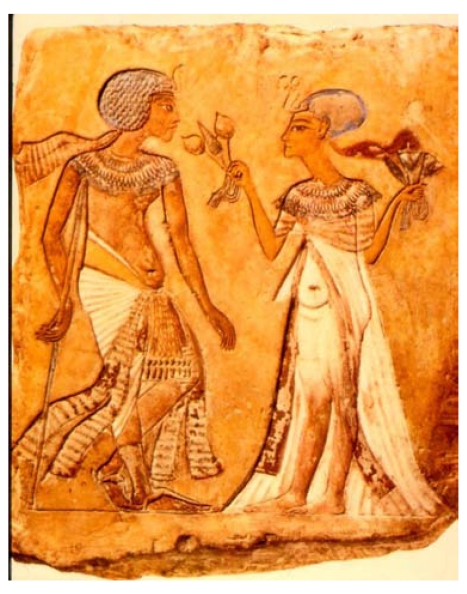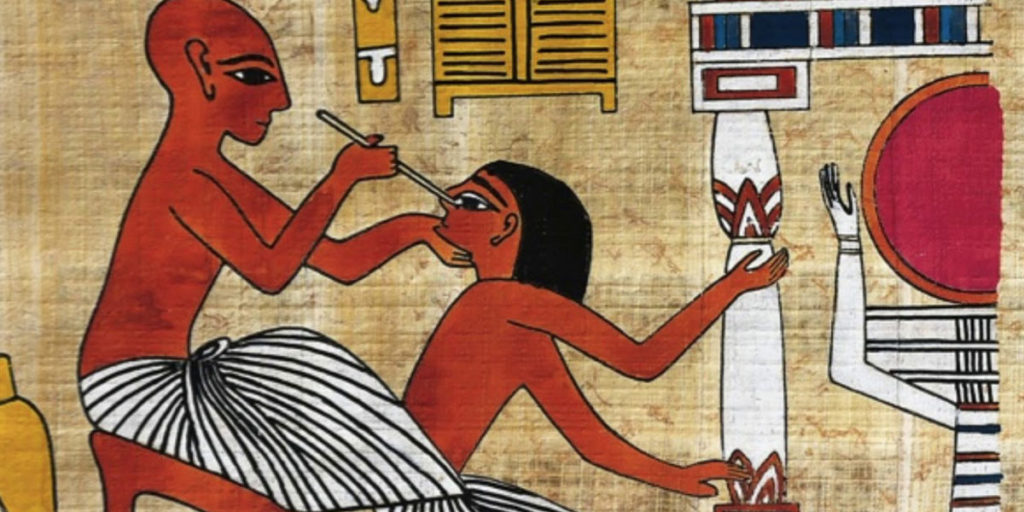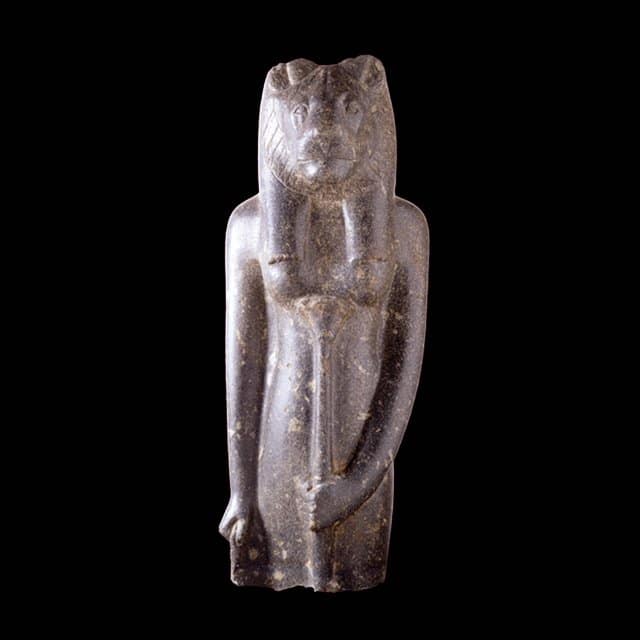Ancient Egypt. Two words that immediately whisk your mind away to a far-off, exotic locale. Where grand pyramids loom above shifting sand dunes and mighty Pharaohs hold glorious ceremonies on the banks of the Nile. It was a time of magic, mummies, and mystery.
Even though the ancient Egyptians are separated from us by millennia, they were just like us in many ways. They celebrated festivals, drank lots of beer, and loved their cats. Another similarity they had with modern society is their not-so-secret fondness for recreational drugs.
It may seem surprising, but getting high was just as much a part of ancient Egypt as it is today. We know this because the ancient Egyptians weren’t coy about their drug use. They left plenty of clues that point to their use of drugs for everything from medicine and rituals to the pursuit of a good time.
Let’s take a closer look at some of the evidence.

Picking Your Poison in Ancient Egypt
It’s already common knowledge that beer was first brewed in ancient Egypt. There is evidence that ancient Egyptian society as a whole was willing to experiment with mind-altering substances.
But the ancient Egyptians didn’t stop at just beer. Archaeological discoveries, mythological tales, and even human remains show evidence that drugs like opium, cannabis, and the esoteric blue lotus were consumed by ancient Egyptians.
What is most interesting about these findings is that in several cases, modern pharmacological science backs up what the ancient Egyptians were saying about their drugs. For instance, the Ebers Papyrus describes the use of cannabis to treat menstrual cramps and hemorrhoids — something which even present-day medical researchers are looking into.
A second example would be the blue lotus, Nymphaea caerulea. It was considered an aphrodisiac as well as a relaxant. The extract of this plant in modern times has been used in erectile dysfunction drugs as well as sleep-inducing teas.
Getting High With the Gods
Even the ancient Egyptian deities were not above indulging in drugs from time to time.
The venerable Thoth, considered the patron god of science and knowledge, was credited with discovering opium. In a legend that shows the ancients understood its pain-relieving properties, the goddess Isis is said to have cured the Sun god Ra’s headache with an offering of opium.
This divine association may be one of the reasons why the use of opium was popular among priests and the elite of ancient Egyptian society.
Cannabis is another drug that has been used in rituals in many cultures, including ancient Egypt.
The plant’s distinctive form can be spotted in imagery associated with Seshat, the deity of wisdom, and Bastet, the feline goddess of war.
Since the Pharaohs considered themselves gods made flesh, they were not to be left out. Cannabis pollen was found on the mummy of Pharaoh Ramses II who died circa 1213 BC.
The adoption of cannabis as a recreational drug in ancient Egyptian society can be inferred from all the historical evidence, as well as the fact that the plant itself originated in the Middle East.
The Legend of the Lotus Eaters
One psychotropic substance that is infamous for its association with ancient Egypt is the blue lotus.
Even other cultures recognized the powers of this plant. In Homer’s Odyssey, the titular hero has his ship blown off course by a storm, bringing him to an island close to the North African coast. There, his scouts encounter the natives who spend their days in a stupor after chewing on the mind-numbing plant.
As his crew begins to succumb to temptation and drift into a lotus-induced daze, it falls to Odysseus to drag them back to the ship and away from the island out of fear that they will become addicted and abandon their quest.
Even the ancient Greeks were aware of Egypt’s consumption of blue lotus at the time. The North African setting for the story implies it occurred near Egypt, a land where the blue lotus had great significance.
The plant is even mentioned in the text of the Book of the Dead where it is said to have magical properties.
The way the lotus sank under the water at night only to rise and bloom again during the day fascinated ancient Egyptians. They associated this trait with the never-ending cycle of life and death, thus giving the plant reverence.
Cocaine Mummies: Fact or Fiction?
There is strong, irrefutable evidence that opium, cannabis, and Nymphaea were all used by ancient Egyptians for their mind-altering capabilities. However, some researchers believe that their predilections were even more decadent.
In 1992, a German researcher named Svetla Balabanova conducted experiments on mummies at the Staatliche Sammlung für Ägyptische Kunst in Munich. What she found shocked historians and scientists alike. The mummies preserved at the museum contained traces of cocaine, nicotine, and hashish!
While the presence of hashish is not so remarkable given the evidence supporting cannabis use in Egypt, it was the cocaine and nicotine that had experts stumped.
These drugs are derived from plants that are native to South America. So their presence in ancient Egyptian mummies seemed anachronistic. How could drugs from the New World reach Egypt thousands of years before the New World was even discovered?
Balabonava and her team’s findings were met with skepticism. But the research methods they employed have held up to scrutiny.
Other historians came forward with alternative explanations for the presence of these drugs. Some are more plausible than others. For example, one theory suggests that the Egyptians used local plants to produce similar compounds as the drugs. Another hypothesis is they were formed from the breakdown of other substances used in the embalming process.
Meanwhile, there are even more far-fetched theories. Some suggest that the presence of cocaine and nicotine in ancient Egyptian mummies means there was contact between South America and Africa centuries before Christopher Columbus made his voyage of discovery. It is a question that stumps researchers and remains one of the unsolved mysteries of the ancient world.
Ancient Egypt was once the pinnacle of civilization with a legacy of marvelous monuments, artifacts, and legends. Evidently, they were also up for taking mind-altering trips.

